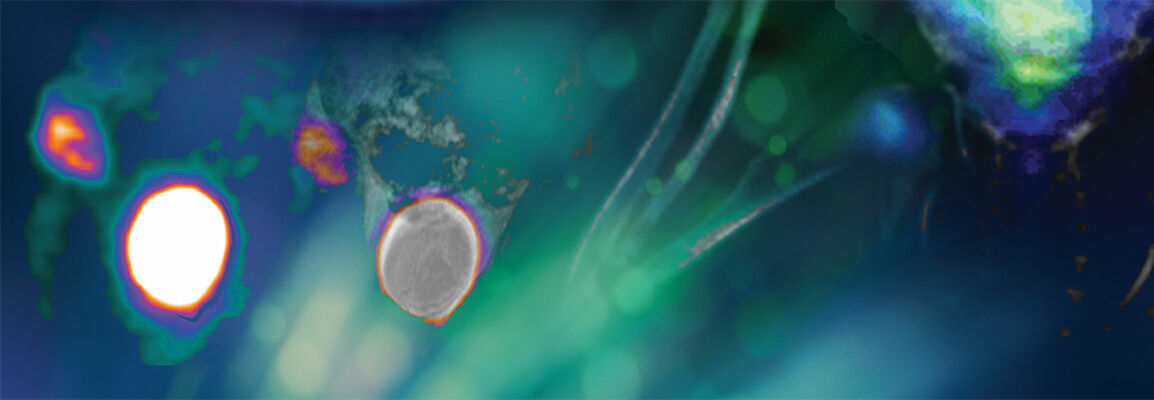

Imaging of Infection and Tumors Using Labelled Siderophores
In this webinar, preclinical imaging specialist from Bruker, Todd Sasser, will introduce researchers Zbynek Novy and Milos Petrik from the Institute of Molecular and Translational Medicine at Palacky University. Novy and Petrik will describe the studies they have conducted into the use of rlabeled siderophores for the nuclear and optical imaging of both infection and cancer.
This webinar took place on December 6th, 2017
What to Expect
The researchers will discuss the use of rabiolabeled siderophores in the detection of Aspergillus fumigatus, a fungus that causes the life-threatening infection invasive aspergillosis (IA). Early and accurate detection of Aspergillus infection is crucial, but current methods lack sufficient specificity and/or sensitivity. Now, Novy, Petrik and co-workers have discovered that the Aspergillus siderophore triacetylfusarinine C shows great potential as sensitive and selective PET tracer of Aspergillus infection once it is labelled with the radionuclide Gallium-68 (68Ga).
The researchers will also describe how attaching two arginine-glycine-aspartic acid (RGD) and minigastrin peptides to the 68Ga-labelled siderophore fusarinine C, enables targeted in vivo imaging of tumors in animal models. RGD peptides have a high-affinity and selectivity for αvβ3 integrin, a cell-surface receptor that is overexpressed in activated endothelial cells and plays an important role in tumor angiogenesis, proliferation, invasiveness and metastatic potential. While a minigastrin analogue (MG11) enables targeting of cholecystokinin-2 (CCK-2) receptor overexpression being involved in rare diseases like gastrointestinal stromal tumors and medullary thyroid carcinoma.
The presenters will also refer to the preclinical imaging instruments they used, the Albira PET/ SPECT/CT and In-Vivo MS FX PRO systems from Bruker BioSpin. The Albira is a trimodal preclinical nuclear imaging system that uses completely unique continuous crystal technology that has been employed in a range of preclinical disease models including cancer, neurodegenerative and infection disease models. The Bruker In-Vivo Multispectral FX PRO system provides multimodal bioluminescence, fluorescence, radioisotopic and X-ray preclinical imaging.
Who Should Attend?
The webinar will be of interest to anyone working in clinical or nuclear medicine departments, particularly those involved in multimodal imaging of infection and cancer. Individuals conducting hospital-based research would also benefit.
Speakers
Dr. Milos Petrik
Researcher at Institute of Molecular and Translational Medicine Palacky University Olomouc, Czech Republic
Researcher in the Institute of Molecular and Translational Medicine, Palacky University, Olomouc. Milos has more than ten years experience in the preclinical research in the field of Nuclear Medicine. His main research interests are infection imaging, radiometal labelled peptides for diagnosis and therapy and small animal multimodal imaging.
Dr. Zbynek Novy
Researcher at Institute of Molecular and Translational Medicine Palacky University Olomouc, Czech Republic
PharmD. Zbynek Novy, PhD - The research assistant in the workgroup of "Small Animal Imaging" (Institute of Molecular and Translational Medicine, Faculty of Medicine and Dentistry, Palacky University Olomouc, Czech Republic) with special focus on microSPECT/PET/CT preclinical imaging in drug development. He made his Masters degree in pharmacy and PhD in pharmacology at Faculty of Pharmacy, Charles University in Prague, Czech Republic.
Dr. Jens Waldeck
Bruker BioSpin MRI GmbH
Dr. Jens Waldeck is working for Bruker BioSpin MRI GmbH as EIMEA Application and Sales Manager in the field of PreClinical Imaging (PCI) As Application Manger in the field of the in vivo optical and PET/SPECT/CT imaging he supports and coordinats trainings, workshops, seminars and research projects. Before joining Bruker he was holding a Senior Application Manager position at Carestream Molecular Imaging/Carestream Health to give support to the European and global market for both in vivo and in vitro optical and nuclear (preclinical) imaging products..